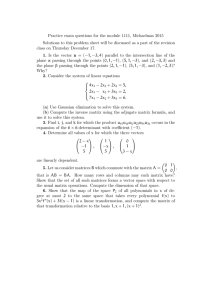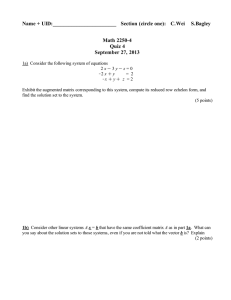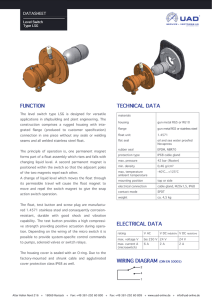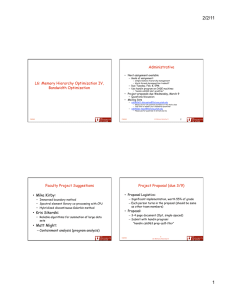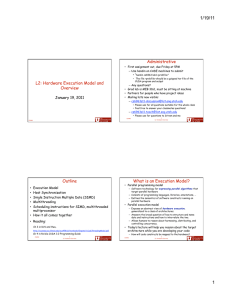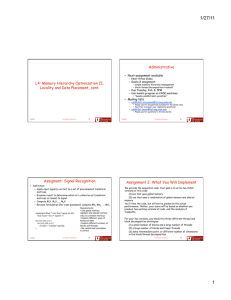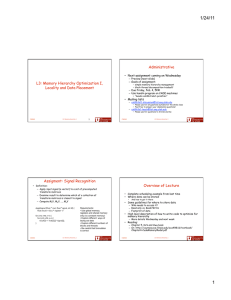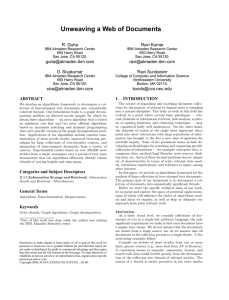Assigment 2: Signal Recognition
advertisement
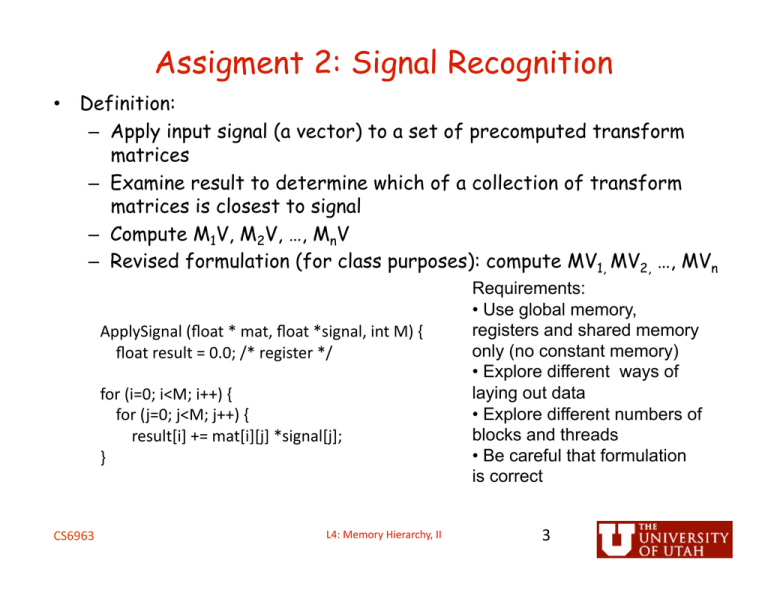
Assigment 2: Signal Recognition
• Definition:
– Apply input signal (a vector) to a set of precomputed transform
matrices
– Examine result to determine which of a collection of transform
matrices is closest to signal
– Compute M1V, M2V, …, MnV
– Revised formulation (for class purposes): compute MV1, MV2, …, MVn
ApplySignal
(float
*
mat,
float
*signal,
int
M)
{
float
result
=
0.0;
/*
register
*/
for
(i=0;
i<M;
i++)
{
for
(j=0;
j<M;
j++)
{
result[i]
+=
mat[i][j]
*signal[j];
}
CS6963
L4:
Memory
Hierarchy,
II
Requirements:
• Use global memory,
registers and shared memory
only (no constant memory)
• Explore different ways of
laying out data
• Explore different numbers of
blocks and threads
• Be careful that formulation
is correct
3
Assignment 2: What You Will Implement
We provide the sequential code. Your goal is to write two CUDA
versions of this code:
(1) one that uses global memory
(2) one that uses a combination of global memory and shared
memory
You'll time the code, but will not be graded on the actual
performance. Rather, your score will be based on whether you
produce two working versions of code, and the analysis of
tradeoffs.
For your two versions, you should try three different thread and
block decomposition strategies:
(1) a small number of blocks and a large number of threads
(2) a large number of blocks and fewer threads
(3) some intermediate point, or different number of dimensions
in the block/thread decomposition
L4:
Memory
Hierarchy,
II
4
Assignment 2: Analyzing the Results
You'll need to perform a series of experiments and report on
results. For each measurement, you should compute the average
execution time of five runs. What insights can you gain from the performance measurements
and differences in behavior.
EXTRA CREDIT: Can you come up with a better implementation of
this code? You can use other memory structures, or simply vary
how much work is performed within a thread. How much faster is
it?
L4:
Memory
Hierarchy,
II
5
